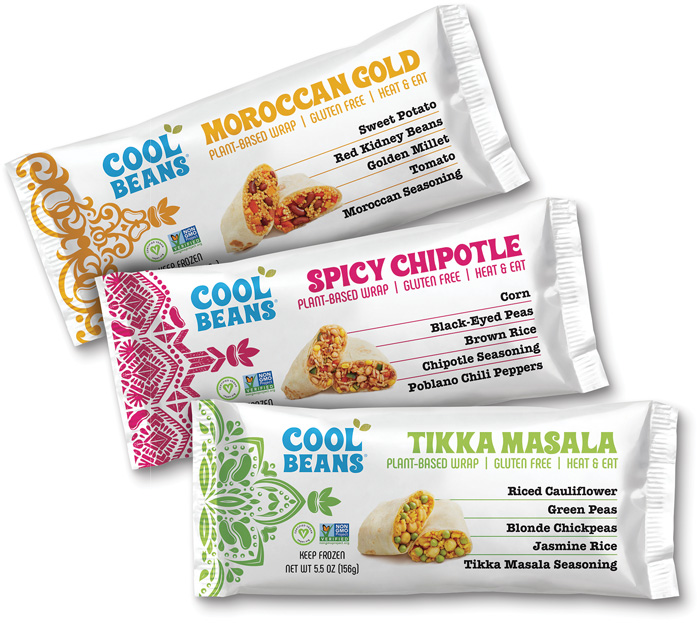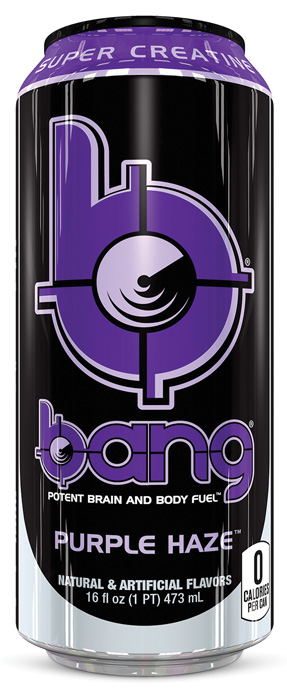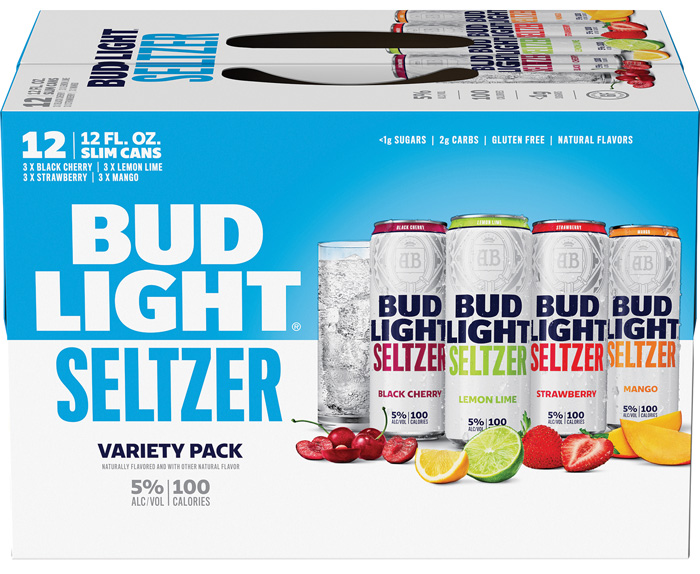
Are Brands Still Relevant?
High-profile megabrands no longer dominate, but startup companies with an authentic story and strategic social media support have the power to successfully build brand loyalty.
Article Content
There was a time when a select number of powerhouse brands from major CPG companies reigned supreme in the food and beverage market. Those days are over, but not because brands are no longer relevant. Instead, as consumers have become increasingly informed and selective, brands may be more important than ever. However, as consumers’ criteria change, there’s more room for new and startup brands to take market share.
A new study from Edelman shows that consumers care more about being able to trust the brands they buy than having a long-term love for the brand. During the pandemic, consumers wanted brands to provide them with the affordable products they needed, while treating front-line employees with care. Moving forward, they want brands to improve society and the world around them.
“Branding in the food and beverage industry is more important than ever before,” says Katie Lundin, a marketing and branding specialist at Crowdspring. “This newest research quantifies a trend that’s been evolving for many years. As younger generations come of age as consumers, they bring expectations of authenticity, social awareness, and environmental awareness from the brands with which they do business. Sadly, many brands have failed to heed this shifting dynamic, leading to loss of trust.”
Because the biggest, oldest brands represent the establishment, shoppers will be skeptical of those well-known brands unless they are actively and visibly working to become more authentic and socially and environmentally aware, Lundin says. “The brands that recognize that the landscape has changed, that consumers want to do business with companies who put people over profits, and act accordingly, will come out on top in the long run.”
Traditional household-name brands may have once taken for granted their place in the market. Now, however, to take—or retake—a meaningful place in the food and beverage market, brands must understand what today’s more discriminating consumer wants, and how they can provide it.
Targeting Informed Consumers
With the ability to access the whole of the world’s knowledge with the swipe of a finger, it’s no surprise that consumers are more informed about brands and have become more demanding. “The days of ‘piling it high and selling it cheap’ and shouting about your brand features and benefits the loudest are over,” says Dan O’Connell, CEO of Foodmix Marketing Communications. “Consumers know what they want, are less likely to fall into a norm, and can see through shallow or unclear claims. The more consumers have learned, the more big, static brands have suffered, and more doors have opened for fighter brands.”
With instant access to information, consumers are empowered “to seek products that support their personal beliefs and needs, be it social or sustainability goals, managing their health or adhering to a restrictive diet for a household member,” adds Joan Driggs, vice president of content and thought leadership at IRI. “Increasingly, consumers demand transparency into the products and services they purchase and use, so they dig into products to make sure the brand aligns with their stance.”
Consumers Want to Trust
Perhaps because consumers are able to easily learn more about brand practices, they tend to hold brands to a higher standard. For example, younger consumers especially are less likely to purchase from a brand they don’t trust to maintain the standards they expect. When millennials see CEOs being paid exorbitant salaries while they struggle to repay student loans on meager salaries, and they see businesses prioritizing shareholders over public health or consumer interests, they lose trust in those brands, Lundin says.
“Food and beverage brands need to adapt to meet consumers’ expectations,” Lundin continues. “The foods we eat and the beverages we drink are very personal; they fuel our bodies and keep us alive. It’s hard to get more personal than that. And people are seeking food and beverage brands they feel they can trust.”
Consumers can see through inauthentic trust-building efforts. Rather than playing at authenticity and social awareness, brands must actually embrace these values and make their business models match them in order to earn trust.
When that happens, consumers do become brand loyal. In fact, a recent Foodmix study of branding in produce shows that younger consumers are more brand loyal than older ones, but they are committed to different brands and have different relationships with those brands. “Boomers never sent pictures of their favorites to friends,” says Foodmix’s O’Connell. “Now we look for those who love our brands, who advocate for them, and those brand lovers are as likely to be young as old.”
The Foodmix study shows that younger consumers are more likely to pay more for their preferred brand: 79% of Gen Zs and 78% of millennials will pay more to get the produce brand they want, as opposed to 66% of Gen Xers and 57% of boomers. And younger consumers are more attuned to brands in general in the produce section, as 31% of Gen Zs and 37% of millennials typically buy only branded produce as opposed to generic or unbranded produce. In comparison, just 23% of Gen Xers and 18% of boomers said they buy only branded produce.
One way brands can earn trust is to serve a targeted audience that resonates with their brand, and to share their brand story with that audience. For example, Tyler Mayoras founded Cool Beans, a company that makes plant-based frozen wraps, after he became vegan and couldn’t find convenience foods that met his needs. Because he shares his story, like-minded consumers can connect with Mayoras and trust his brand. “Tyler engages with people on a very personal level, making personal deliveries of products to influencers and doing podcast interviews, so you know it’s coming from a real place,” says Rachel Porges, head of marketing for Cool Beans. “This isn’t just some fly-by-night brand. We try to share the story of how we started wherever we can. Trust is about being real, honest, and open.”
Inviting Consumers In
As consumers search for brands they can trust, there’s more room for newcomers like Cool Beans, which debuted on retail shelves in early 2020. By continuing to do business as usual, traditional food companies have helped open the market for newcomers.
“Mega-brands like Nestlé and PepsiCo are like massive ocean liners,” Lundin says. “Their size and inertia makes it difficult to pivot. They assume their size and longevity keep them safe, making them overconfident and slow to adapt. But they’re not embracing consumers’ expectations of authenticity and they’re not doing enough to become more environmentally conscious or socially active. This makes it easy for smaller brands that are meeting those expectations to gain brand loyalty.”
In addition to the demand for brand trust, technology has created an environment that makes it easier for startups to get noticed. Social media allows word-of-mouth communication to spread farther and wider than ever before, and the availability of information has shifted power from the company to the consumer, says Melissa Packham, food and beverage branding consultant with Brand Led Business.
The emerging brands that are establishing a foothold in the food and beverage industry are doing so with different tactics from traditional brands and with different ways of interacting with consumers. “With smaller budgets, they have to be stealthy,” says Sara Hagen, president at Foodmix Marketing Communications. “But at the core of their strategy is presenting an authentic voice to their consumer. They have mastered opening their doors and inviting them in to learn more.”
How to Gain—or Regain Relevance
Whether they are legacy brands or startups, food and beverage brands can take some deliberate steps to connect with—and maintain connections with—consumers. Here’s a look at some smart—and meaningful—brand-building strategies.
1) Know Your Audience
Contemporary brands need to home in on a specific audience, and then focus on delivering to that audience in a transparent, authentic way. When you know your audience, you can target your marketing dollars to meet the audience members where they are, such as working with retailers in-store to curate assortment and working online to get noticed in searches, Driggs says.
“Find the attributes that matter to your audience and promote them in a way that breaks through the noise,” Driggs adds. While younger generations are looking for brands with a conscience, purpose, and a commitment to action, that doesn’t mean all brands have to be altruistic. The secret is in creating a connection, whether that connection is based on social justice or a hip lifestyle.
For example, in 2019, the No. 1 New Product Pacesetter on IRI’s annually compiled list of best-selling product launches was Bang energy drink, which had almost no media budget, Driggs says. Instead of spending a lot of money on media buys, Bang focused on meeting younger consumers where they were, which was on social media. By working with social influencers and building a community of like-minded consumers, Bang promoted a lifestyle around the brand and consumers bought into it because it felt authentic to them. Another successful new brand, Rebel ice cream, started as a Kickstarter campaign and focused on a clean label and keto-friendly platform rather than trying to be “all things to all people,” Driggs says.
Some legacy brands were able to pivot successfully during the pandemic with new products like MTN DEW Zero Sugar and Bud Light Seltzer. These brands addressed “how consumers’ lives had changed” and how the brands positioned themselves to become “a part of the joy during a tough time hunkering down at home,” Driggs says. “Products that succeed will look at how consumers’ lives are changing—again—and what’s needed most. Conven-ience, health and wellness, indulgence, and sustainability are not going away, but they might look a little different moving forward.”
2) Make a Difference
Food and beverage companies should take time to evaluate themselves and determine what values or socially conscious missions can authentically align with their brands, Lundin advises. It could be evaluating your business’s environmental impact, the way you treat employees, or choosing to be vocal about a social cause that matters to your company. If necessary, make changes to your business practices to align with your brand’s values, and update your brand messaging to reflect any changes to your business.
Unilever-owned Ben & Jerry’s has long focused on educating its audience and acting on its values related to social and environmental causes. The brand reported double-digit growth during the first half of 2021.
Oatly is a brand that has recently disrupted the dairy category with a plant-based alternative. Not only does the brand have a strong visual identity, brand personality, and voice, but it is actively petitioning global governments to make environmental change within the food industry, Packham says.
“Innovation has been a key driver of success for both Oatly and Ben & Jerry’s,” Packham says. “[With] a focus on increasing purchase frequency through new occasions, coupled with unwavering alignment with their brand values and investment in marketing to communicate those values, we’re seeing the beginnings of the blueprint for brands of the future being laid out.”
3) Tell Your Story
When brands have a target audience and an authentic purpose and mission, the next step is to share that story with those who need to hear it. “The most authentic, relevant, unique, and truest brand stories win in the end,” says Foodmix’s O’Connell. “Consumers expect transparency. So while store brands have emerged, and will continue to grab share, their stories are often limited, because they are not the source. Social media is a key medium to aid storytelling, and is best used in concert with other mediums to get the full story out.”
While a variety of media is important for effective storytelling, using social media expertly is practically a requirement for today’s most successful brands. And in an era of consumer-led communication, sometimes that means letting consumers steer the story and being prepared to hop on board when an opportunity presents itself.
For example, in October 2020, when an Idaho potato plant worker’s truck broke down on the side of the road, he posted a TikTok video of his skateboard ride to work as he sang along with Fleetwood Mac and guzzled from a bottle of Ocean Spray Cran-Raspberry juice. The video went viral and was viewed more than 46 million times on TikTok and shared on a number of other platforms within a matter of days. Ocean Spray jumped on the bandwagon, posting its own skateboarding videos and providing potato plant worker Nathan Apodaca with a new truck stocked with Ocean Spray juice.
In addition to being prepared to interact with consumer-generated content and trending topics, winning brands are also creating their own social media strategies. “In the early days, people saw social media as free and easy, so they did a lot of it, but it was typically run by junior people,” O’Connell says. “The conversations have heated up and now, even in B2B, there is more strategy and linkage to the overall brand story and plan.”
One of the social media strategies that is most effectively connecting food and beverage brands with their audiences is the use of social media influencers. By partnering with influencers, brands can automatically get their stories seen and heard by a wide, carefully selected audience. And because the most popular influencers already have established trust with their audiences, brands can benefit with an extension of that trust.
For example, Charli D’Amelio is one of the most followed influencers on TikTok, with more than 120 million followers. But she was a vocal Dunkin’ patron even before she reached that status: she shows off a Dunkin’ beverage in more than 120 of her videos, says Nicole Alibrandi, marketing manager at Mediakix. The Dunkin’ brand wisely chose to partner with D’Amelio and has since launched two drinks in her name. Dunkin’ revealed that the 16-year-old’s signature drink increased daily app downloads by 57% and cold brew coffee sales the day after the launch went up by 45%.
Clearly, partnering with a social media influencer who shares the brand’s audience can be a powerful way to share your story and reach your target audience.


















